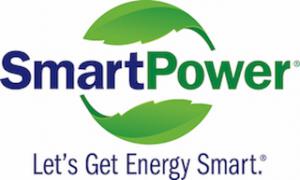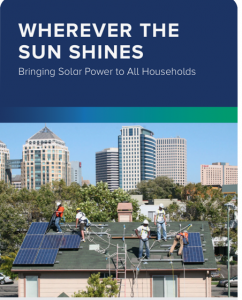Yale Study: SmartPower's Solarize Program Key To Engaging Low-To-Moderate Communities in Solar
Research by Yale & NYU Shows That Solarize campaigns and messages, can lead to an average 1,000% increase in local installations.
WASHINGTON, DC, USA, August 4, 2020 /EINPresswire.com/ -- A new guidebook from Yale University -- and featuring the award-winning Solarize Campaign of SmartPower -- offers a roadmap for installing rooftop solar panels in low-to-moderate (LMI) communities -- communities that are often overlooked across the USA. At the same time this Guidebook outlines the barriers and potential benefits of bringing rooftop solar to these LMI households.
The guidebook is based on research by Dr. Kenneth Gillingham, associate professor of environmental and energy economics at the Yale School of the Environment, and Dr. Bryan Bollinger, associate professor of marketing at New York University, and is derived from a series of “Solarize” on-the-ground outreach campaigns managed by the nationally recognized nonprofit organization, SmartPower.
Solarize is a proven community-based outreach approach that brings together solar installers, environmental organizations, community-based volunteers, local officials, and residents to accelerate adoption of rooftop solar. Previously Gillingham, Bollinger and SmartPower collaborated and detailed the effectiveness of these Solarize campaigns and messages, which can lead to an average 1,000-percent increase in local installations
“Breaking through to low-and-moderate-income communities has been one of our long-term challenges and goals,” said Brian F. Keane, President of SmartPower. “And now we have the roadmap. Indeed, each and every community is different – and nuances matter. But with this Guidebook we help unlock those nuances so that all Americans can be part of the solar solution.”
Funded by the U.S. Department of Energy’s Solar Energy Technologies Office (SETO), this resource offers a roadmap for installing rooftop solar panels in communities that are too often overlooked when it comes to promoting renewable energy solutions.
“The research underlying this guidebook provided new insights into how to reach LMI households to help them reduce energy costs and the negative environmental impacts from building energy use,” said Yale’s Gillingham.
The recent phase of the research focused on LMI communities, and how different messages can resonate differently with different communities. One first finding is that Solarize campaigns were proven to be effective among LMI communities. But the messaging field experiment provided further nuances on how to reach potential solar customers across all income groups. While self-interest, financially-oriented messages work best among high-income households, evidence suggests that community-focused — or “pro-social” messages — resulted in more satisfied customers who were more likely to tell their friends and neighbors about the positive experience.
Key findings from the research include:
1. It is critical to assess and remove key barriers. A starting point is to make sure that the policy environment is conducive to LMI solar adoption. It is especially important to have financing options that are tailored to the needs of these customers. When capital is available, solar can be much more attractive and accessible to LMI households. Shared community solar options also hold great promise for LMI adoption of solar.
2. Solarize programs work in LMI communities. Households in these communities are open to the idea of installing solar, and peer-to-peer and neighbor-to-neighbor campaigns that encourage solar adoption can succeed. A major reason for this is that trust matters, so community volunteers and local “solar ambassadors” can be very influential.
3. Getting the word out is critical. In LMI communities, customers are equally likely to adopt solar as a result of either a community-based or individual-based message; The researchers find that messaging does not matter for the number of adoptions. This suggests simply that engaging in messaging at all is critical.
4. Messaging matters for who adopts. Households that install solar after receiving community-based messages are happier with their installations and are more likely to recommend solar to their friends and neighbors, even if the installations tend to be somewhat smaller and less financially lucrative to the household. So, if the goal is to deliver happy adopters who continue to tell their peers about solar, community-based messaging is the preferred approach for LMI communities.
This guidebook aims to identify the best ways to connect with potential LMI customers and understand what makes them interested in purchasing rooftop solar systems. The authors hope that policymakers, once armed with this information and tools that they can use, will continue to develop programs making solar attractive for as many customers as possible. The Guidebook can be downloaded at the Yale School of the Environment website.
###
Brian F. Keane
SmartPower
+1 202-674-7509
email us here
Visit us on social media:
Facebook
Twitter
Legal Disclaimer:
EIN Presswire provides this news content "as is" without warranty of any kind. We do not accept any responsibility or liability for the accuracy, content, images, videos, licenses, completeness, legality, or reliability of the information contained in this article. If you have any complaints or copyright issues related to this article, kindly contact the author above.



